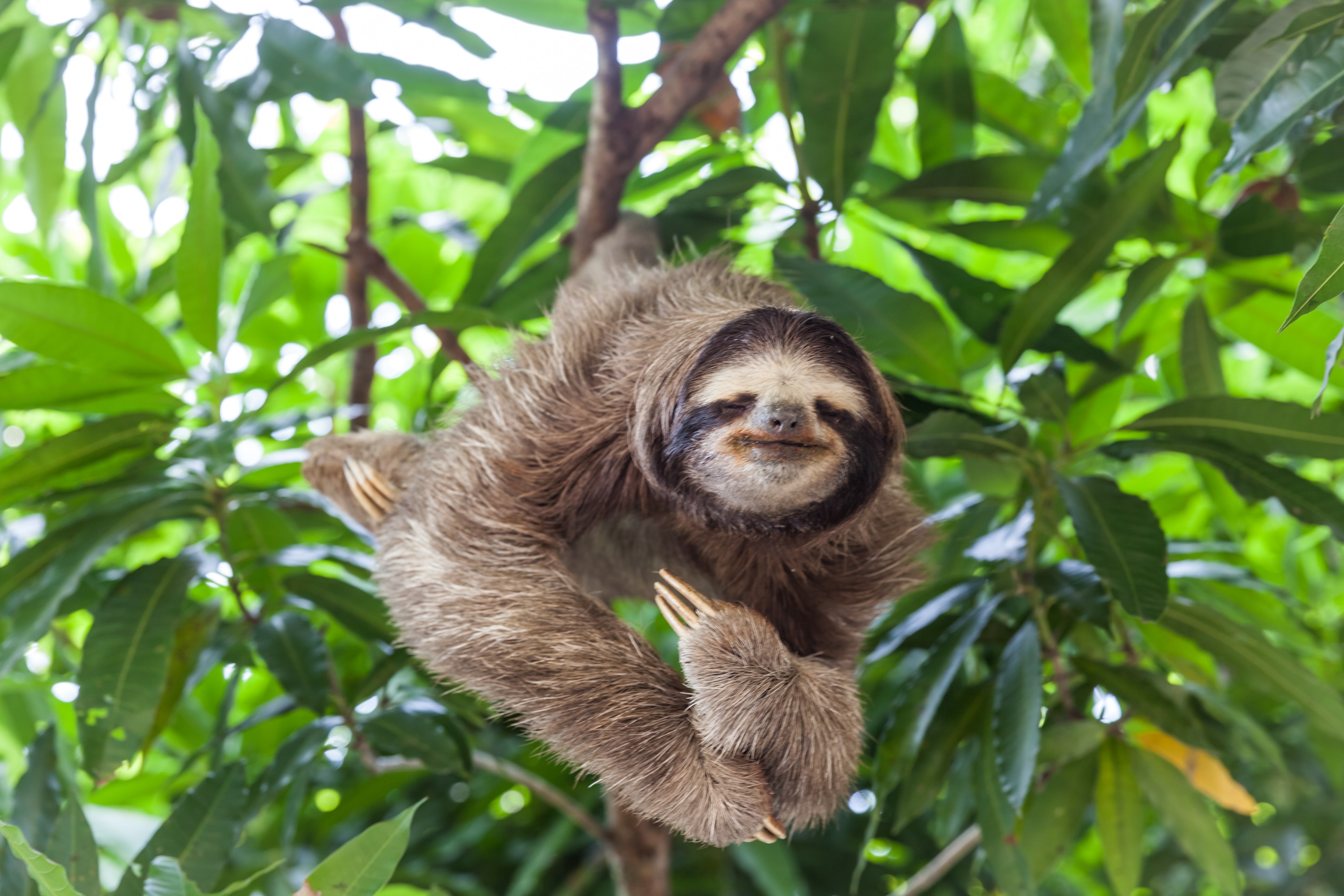

But why would you want to, given all that?

To answer your question, yes, you can get a sloth with a non-transferable permit. This same person who is claiming things like “he has heard there are sloth biscuits” that make it easy to feed sloths knows nothing about sloths, and if you challenge him, like Donald Trump, he will defend himself with “well that’s what he heard.” Rescued sloths are generally cared for by rehabbers and sanctuaries in the area the sloth comes from so they can be released at adulthood into the wild, and people who are not “rehabbers” who have purchased “rescued” sloths are purchasing baby sloths whose mothers have been slaughtered. Rescued sloths are not shipped out of the country for the pet trade. Instead, get your fix by visiting sloths at the Smithsonian’s National Zoo or taking home a sloth plush through the Adopt a Species program.Anyone who claims “he has heard” there is a “sloth rescue market” is not telling the truth. Their unique diet, lifestyle and health needs require specialized care. Sloths may be amazing and adorable but, like other exotic animals, they don’t make good pets. They’re also impacted by wildlife trafficking. Supporting the responsible use of resources (like choosing Smithsonian Bird Friendly Coffee) can help protect them from habitat loss. hanging on tree branch with funny face look, perfect portrait of wild animal.

Sloths live in rainforests, where habitat destruction is a serious threat. Discover more about the Sloth, the issues and threats they are facing. They’re mostly nocturnal, sleeping during the daytime and waking up at night to eat. True to their name, sloths sleep for about 15 hours a day. So long, in fact, that a sloth usually only climbs down from its tree about once a week to poop! How much do sloths sleep? It takes a long time for a sloth to digest its leafy diet. They lap dew drops off of leaves and fruits, and get additional water from their food.ĭid you know that a sloth’s teeth grow continuously throughout its life? As sloths chomp on plants, their teeth get worn down, which prevents them from getting too long. Though mostly herbivorous, they may occasionally snack on a larval insect or other passive, protein-packed snack (like a bird egg). Sloths eat leaves, fruit and some select fresh green shoots (they’re not keen on crunchy twigs). They’re not much to look at, but three-toed sloths do have short, stubby tails. Jaguars and eagles are common predators of sloths. This little ecosystem created by the algae is so unique that some species, like the sloth moth, live exclusively on sloth fur! So, do sloths have predators? Quality Synthetic Lawn in Fawn Creek, Kansas will provide you with much more than a green turf and a means of conserving water. The green tint of the algae helps sloths blend in to their leafy surroundings, but it also invites ticks, mites, beetles, moths and other creepy crawlies to the party. Each strand of a sloth’s coarse fur has grooves that run from top to bottom where two types of blue-green algae grow. And despite their slow movements, sloths are surprisingly strong.Īnd there are other reasons not to snuggle up to a sloth. However, when threatened, they can use their 3- to 4-inch-long claws and teeth to defend themselves. Sloths typically rely on their camouflage to protect themselves from predators. But if you do, like any wild animal, it’s best to keep your distance. In all seriousness, you’re unlikely to cross paths with a sloth in the wild (they rarely leave their treetop hideouts). that sloths have been labelled as the worlds laziest animals for decades. Sloths will sleep, eat, mate and even give birth upside down! Why are sloths so slow? Discover 10 interesting facts about sloths, and learn more about The Sloth. They live high in the trees of tropical rainforests, where they spend most of their time curled up or hanging upside down from branches.

Sloths are found throughout Central America and northern South America, including parts of Brazil and Peru. Sloths actually belong to the superorder Xenarthra and the order Pilosa, with a family tree that includes anteaters and armadillos. But sloths and koalas developed these traits independently of each other. Koalas, for example, are marsupials that live in trees, eat leaves and have slow metabolisms. Sloths are mammals, but they aren’t primates or marsupials – though the groups do share some similarities. Two-toed sloths are also slightly bigger than their three-toed pals. But two-toed sloths only have two toes on their front feet, whereas three-toed sloths (you guessed it) have three. Truth be told, all sloths have three toes on their back feet. There are two living families of sloths: two-toed sloths and three-toed sloths.


 0 kommentar(er)
0 kommentar(er)
